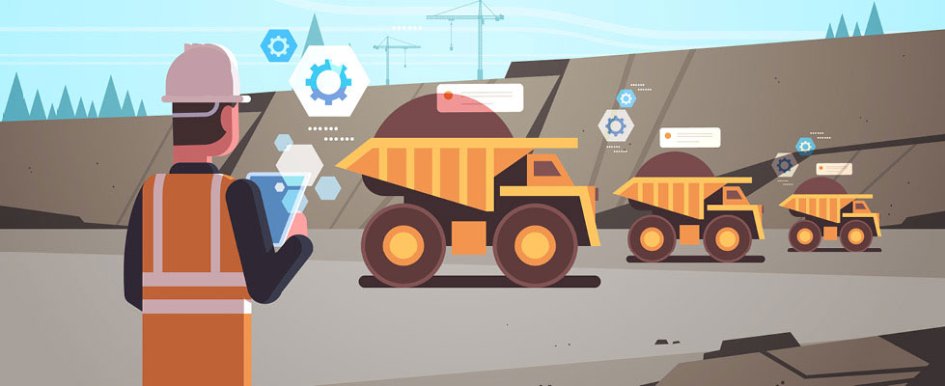
For the average construction fleet, managers and owners operate with a slim margin for error. A single poorly maintained asset, or an inefficient allocation of personnel can have a cascading impact on the growth of the business — and that’s when times are normal. Add to that the ongoing supply chain disruption and the labor market as it experiences a once-in-a-generation redistribution, and suddenly fleets have to rethink every aspect of their operations to maintain profitability.
As construction companies grapple with market upheaval, leaning into integrated systems and data-driven analytics can provide a powerful stabilizer. Through modern fleet management solutions, managers can access a comprehensive look into how individual assets of all types are being deployed, coupled with intelligent recommendations to improve efficiency. Further, interactive coaching and training functions help improve driver and operator skills, reducing both on-road accidents and driver turnover when companies can least afford it.
If you’re looking to create an intelligent fleet that can weather disruption and help grow your business, there are a few things to know.
Integrated Assets Through One Pane of Glass
Given the diverse array of needs on any construction site, most projects aggregate any variety of different assets — each with its own siloed telematics data. At a strictly tactical level, this fragmented approach can negatively impact the day-to-day operations of each job. To fully take advantage of the rich data generated by each asset, make smarter decisions and improve efficiency would require field managers to have a full working knowledge of each system, then manually bring them all together for analysis.
Understandably, this is rarely the case and simply not plausible given the time. Splitting this data into individual views takes time and removes opportunity from completing higher-value construction work.
Today’s fleet management systems create an asset-agnostic hub that can be deployed across any job, for any need. Bringing together disparate systems — such as data from rolling assets, off-road assets or yellow-iron equipment — into a central location, managers within different functions can glean the full scope of their operations, complete with additional context and insights.
Not only can this lead to more optimized deployment of equipment — putting the right vehicle or machine at the right place at the right time — but it can also proactively identify potential needs through predictive maintenance. For example, armed with the knowledge, managers can strategically plan fleet repair to eliminate disruption and keep projects moving.
Technology-Driven Experiences
Construction organizations are not immune to the effects of the “Great Resignation.” As employees step back from their jobs en masse, leaders are no longer in a position to immediately replace staff. The labor shortage is felt at all levels. As a result, they must rethink how they approach keeping existing crew engaged, as well as improve the skills of those who cannot necessarily be let go.
Increasingly, fleet managers are relying on technology to solve key problems in retention. Consider, for example, the sheer number of manual processes that can bog down a construction team. From compliance forms to time sheets to insurance — there’s a lot of room for error. Intelligent fleet systems automate much of these processes, taking these tasks off the plates of employees so they can focus on higher value projects.
Automation is having a similar impact on the training and development end of the spectrum. Video solutions built on artificial intelligence (AI) provide an interactive and proactive tool for identifying risky behaviors in real-time while operating an asset and notifying employees so they can take corrective action and adjust that behavior moving forward. This has powerful safety implications as well, helping to prevent serious injury while on-site or on the road. For example, if a driver is distracted or uses a phone, AI video would offer alerts, keeping everyone safe. This way employees can see themselves improve, becoming even more valuable to the growth and sustainability of your business.
Optimizing for the Future
Despite ongoing disruption, the digitalization of construction fleets will play an important role in how organizations navigate future challenges. Their approach to data, whether it be to make smarter operational decisions or improve the experience of staff on the ground, will be a critical deciding factor as competition — as well as demand — grows. By leaning into the power of technology to reshape the very foundation of fleets, leaders put themselves in the position to not only overcome the short-term hurdles, but better meet those they cannot yet anticipate.
